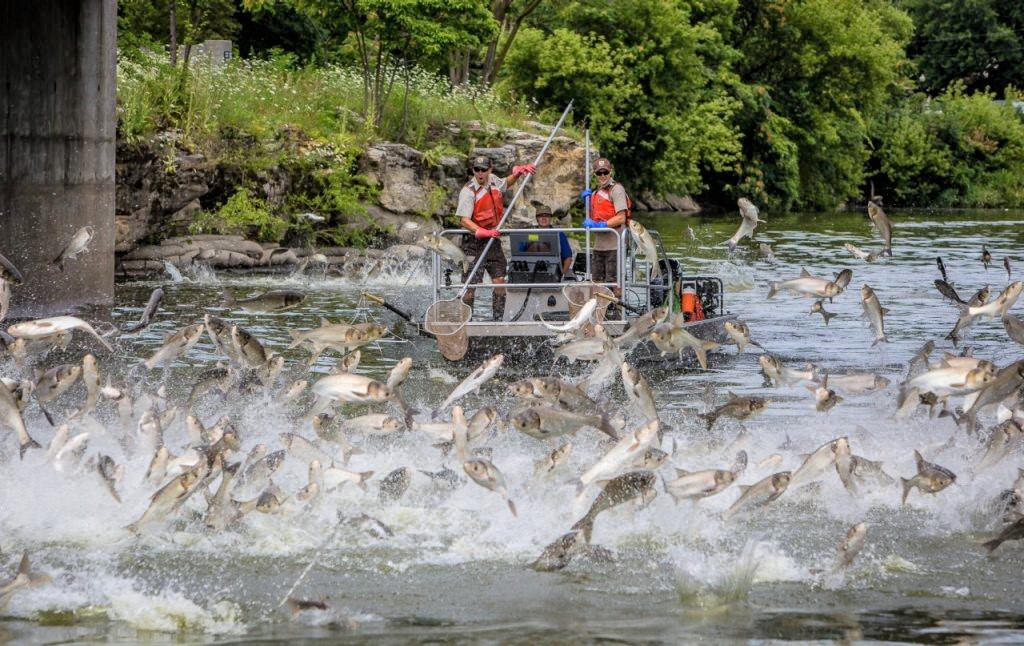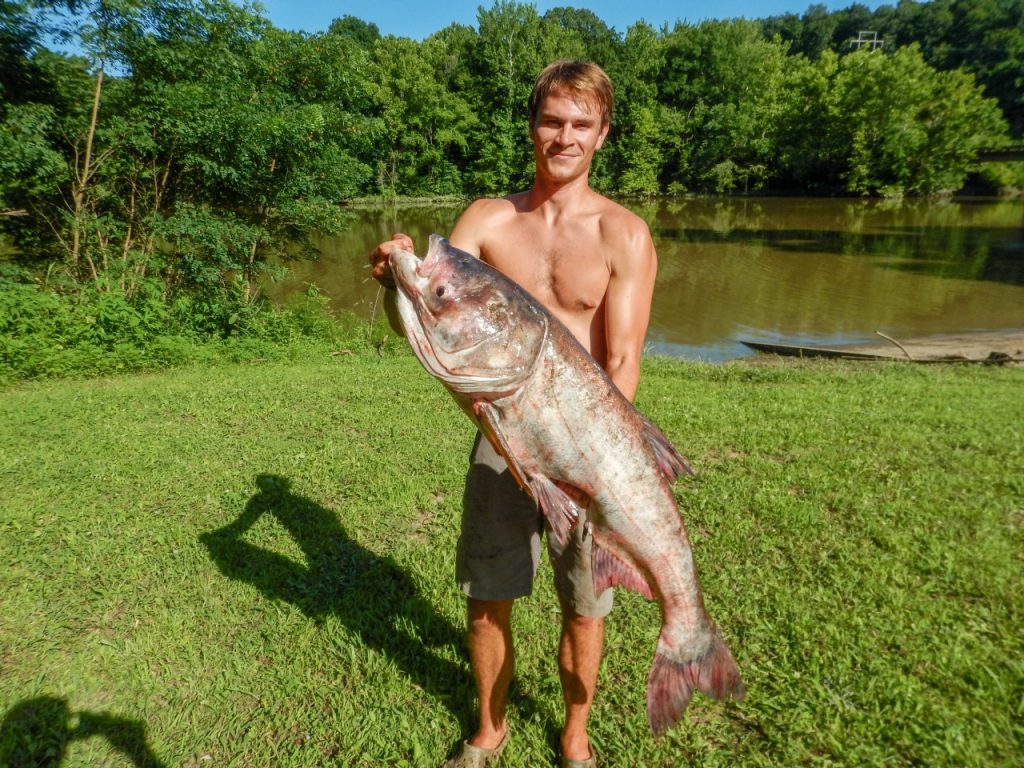
Imagine you’re driving a boat. You’re enjoying a weekend day at the lake, the wind whipping through your hair and the sun warm on your face. You feel a gentle spray of water as your boat carves a path through the calm surface of the early morning water.
Suddenly, there’s frantic splashing all around you. Dozens of giant, shimmering fish leap out of the water. Just as you turn to steer away, one of them jumps up in front of the boat and slaps you across the face.
You were hit by a silver carp, just one species in a family of invasive fish collectively known as Asian carp that have grown so numerous in the Mississippi River system in recent years they’ve become hazardous to boaters. The danger Asian carp pose to boaters — and they are dangerous, with people having suffered broken bones and concussions after being hit by the enormous, jumping fish — is only one symptom of the greater threat the spread of these fish poses: catastrophic ecological harm.
So how do you manage an invasive species of fish that in only a few decades has spread up and down the Mississippi River, out-competing native species and becoming more than 90 percent of the total biomass of some river systems?
According to one Virginia Tech researcher, you eat them.
Believe it or not, these pestilential invaders causing some major ecological harm are a safe, plentiful, and healthy food source that is flavorful and nutritious. So why aren’t we eating them? Clay Ferguson, a fisheries researcher and Ph.D. student in Virginia Tech’s Department of Food Science and Technology thinks we should be.
He has published new research on the nutritional value and fillet yield of Asian carp to help establish them as a viable food fish in the United States.
“Of the roughly 4,300 invasive species in the United States, very few are actually conducive to suppression by consumption — meaning that they’re at a large enough density population-wise, reasonably accessible and tasty enough,” Ferguson said. “Asian carp are unique.”
Asian carp were introduced to U.S. ecosystems in the 1970s after being brought over from Asia and were used to solve water quality issues in enclosed bodies of water. Once escaping to nearby water systems, the fishes’ hearty nature and rapid reproduction made them almost impossible to contain. Efforts by ecologists and wildlife agencies to control their numbers have been expensive and largely unsuccessful, and now they find themselves racing against time to prevent the fish from making their way into the Great Lakes, where they fear the resulting population explosion would cause irreversible damage to local ecosystems.
So now, the obvious question: if they’re so numerous and easy to catch, why are we not eating them? According to Ferguson, there are a few hurdles to overcome. The first of which is public perception. Many American consumers see all carp as “dirty,” he said. They’re thought of as bottom-feeders, largely due to this being true for certain carp species. But Ferguson says that the opposite is actually the case for Asian carp.
Ferguson said previous attempts at marketing the fish to consumers have addressed this by simply removing “carp” from the fishes’ name. In some places, Asian carp are sold for consumption as “silverfin.”

The other hurdle facing a successful Asian carp fishery is a serious lack of practical data. There just hasn’t been much research on what it would take to harvest the fish for large scale consumption, making ecologists reluctant to turn to food-based solutions. That’s where Ferguson’s research comes in.
His initial project aimed to evaluate the consumptive value of Asian carp and provide relevant info needed for planning, such as economy of scale data. To do so, Ferguson and his team first traveled to western Kentucky where they joined a collaborative state agency effort to remove thousands of pounds of silver and bighead carp in a single day from the Ohio River, not as difficult a task as you might think when the fish are leaping into the boat on their own, he said. The team then took their haul back to the lab to process the fish. The team ground up and freeze-dried each component so they could test for nutritional value, including protein and lipid content.
Their results revealed that the fish were incredibly nutritious — shockingly so for a nonmarine species.
Ferguson’s findings were published in July. With it now demonstrated that Asian carp are a safe, plentiful, and healthy food source, there’s probably only one question still on your mind.
How do they taste?
“They have white, flakey meat that’s mild, not very fishy, and take to most any seasoning,” Ferguson said with a laugh. “If you are one of the few who try and don’t like Asian carp, that fish was either poorly handled, overcooked or you just don’t like fish.”



